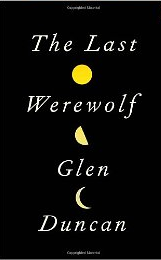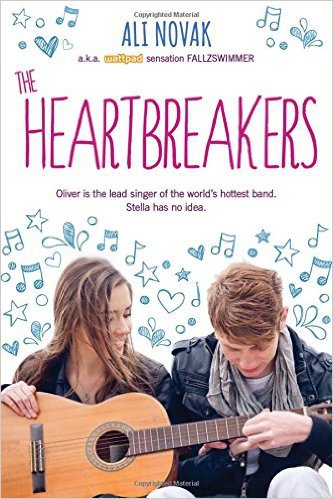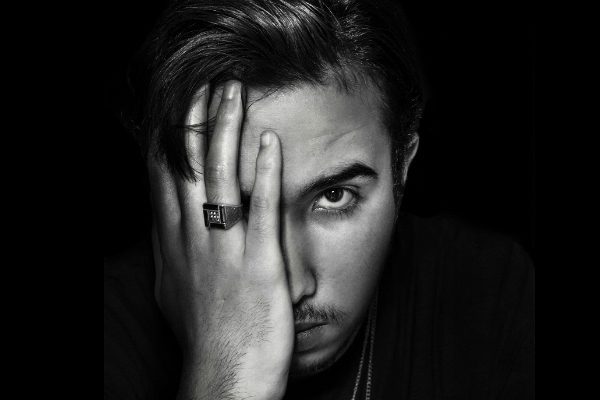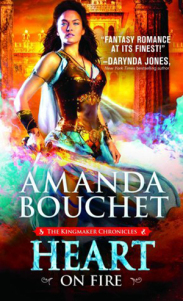 THE LAST WEREWOLF, written by British author, Glen Duncan, was published in 2011. THE LAST WEREWOLF is the eighth novel for Duncan and a sequel, TALLULAH RISING followed in 2012. As might be expected, Marlowe, the protagonist of THE LAST WEREWOLF, is a werewolf–“the last werewolf ” he informs the reader in the first person narrative.
THE LAST WEREWOLF, written by British author, Glen Duncan, was published in 2011. THE LAST WEREWOLF is the eighth novel for Duncan and a sequel, TALLULAH RISING followed in 2012. As might be expected, Marlowe, the protagonist of THE LAST WEREWOLF, is a werewolf–“the last werewolf ” he informs the reader in the first person narrative.
The opening sentence announces that second to the last werewolf (“The Berliner”) just bit the dust courtesy of Grainer, a “Hunter.”
Grainer, a man with small hard eyes who has Native American ancestors works with WOCOP, an organization that keeps track of supernatural shenanigans, including vampires (down to fifty “families’) and werewolves–down now, to only Marlowe. Marlowe killed and ate Grainer’s father, so it’s not just business; it’s personal. Marlowe is funny, literate and when it comes to the low down on the lupines and the vamps, very informative. Even though, by his own admission Marlowe has killed, eviscerated, intentionally delighting in the terror he causes before he chows down on his victims (over two thousand and counting) Marlowe is shaken by the news that Grainer beheaded “The Berliner” rather than just shooting him with a silver bullet. Why so squeamish?
I wished I liked Marlowe and cared whether or not he lives to feed under another full moon. I don’t.
Besides creating Marlowe’s vivid dark humor, Mr. Duncan’s use of language is dazzling. “The hand I lifted to wipe my face was the impatient ghost of the other hand, the hybrid thing, heavy, elegant, claw-tipped.” He employs numerous allusions, including quotes throughout- such as Blake’s “Did He who made the lamb make thee?” There’s a semester’s worth of literature in these nods: Lady Chatterley’s Lover (“We’re like Connie and Mellor’s at the end, apart, chaste,…”) The ill-fated Harley, Marlowe’s “familiar” tells him “You’ll actually be flying private charter as Matt Arnold.” Duncan’s style is “Literary” with a capital “L.”
Marlowe is over two hundred years old–middle-aged by werewolf standards.
Werewolves can live to be four hundred or so. Along with literature, we get nods to what’s current in 2012–Obama’s “Audacity of hope,” “American Idol,” and so on. Duncan also gets the jump on his critics by having Marlowe say, “I can think back to a time when something like this would have annoyed or at least amused me, that the democracy Westerners truly got excited about was the one that made every blogging berk a critic and every frothing fascist a political pundit.”
I particularly liked Duncan’s knack for boiling down complex concepts into a sentence or two.
In describing his state of mind after meeting Tallulah, a “she” werewolf, Marlowe says “I’ve stopped abstracting. This is love. You stop bothering about the universal, the general, get sucked instead into the local and particular. When will I see her again? What shall we do today?” His prose is lush–so lush that at times I found it intrusive–then plain annoying. “The little combat flurry had left me with a post-adrenaline heaviness, worsened now by the predictability of the picture revealed by joining the dots.” Sometimes you say wow and other times–enough already.
Okay–so here’s where I get all “Church Lady” (a 1980’s Saturday Night Live character for those of you who don’t know) on you.
Marlowe takes pains to provide us with his sexual preferences–detailing the ins and outs of his encounters with prostitutes–especially the “ins.” He describes various orifaces–“the moist crinkle of Madeline’s anus,’ “I had oral, vaginal and anal sex with her (in that order; I repeat, I’m not a misogynist.)” After meeting Tallulah, his she-wolf-dream-girl–“I wanted to go back to her clean and put my nose in her cunt and my tongue in her sweet young asshole.” All righty. I think we get it! I’m not a prude. My second book has a considerable amount of erotica. But, in my opinion Marlowe’s obsession is a tad overkill, pardon the pun. TMI people! You get the feeling that Duncan’s put a lot of himself into the old wolf-man. Whatever. I suppose that you can make the case that dogs greet each other by sniffing rear ends so it stands to reason that Marlowe might find them a particular focal point.
I have two structural issues with this book and one on theme.
Duncan introduces the idea of “Quinn’s book.” Quinn’s book might have information on the origin of werewolves. Written by a 1930’s archeologist named Quinn, Marlow has been seeking it for years. After using it as a carrot to lure Marlowe into cooperating with vampires who now have it under lock and key, Duncan just drops the device, having Marlowe decide that to know how werewolves originated is pointless. No fair–Duncan. Marlowe may not care, but we, the readers do.
Marlowe, as a character, doesn’t change.
Although he finds in Tallulah a reason to live, she’s really an extension of him. It’s self-love and the same narcissism that allowed Marlowe to choose to live by inflicting gory horrifying death on thousands enables him to be “in love” with someone who can share his hedonistic existence.
By creating an antagonist like Grainer, Duncan fails to have Marlowe come to terms with his prolonged existence.
The monotony and the cost to his humanity can be avoided because Marlowe’s wits and resources are engaged by being the object of “The Hunt.” This book was very interesting and at times, engrossing.
Still, I couldn’t shake the feeling that Duncan was slumming–showing the genre world how it’s done. In the process, he engaged my brain, but never my gut. I just never cared, and in fiction, that’s what keeps you turning the pages.
Advertisements Share this:
- More






